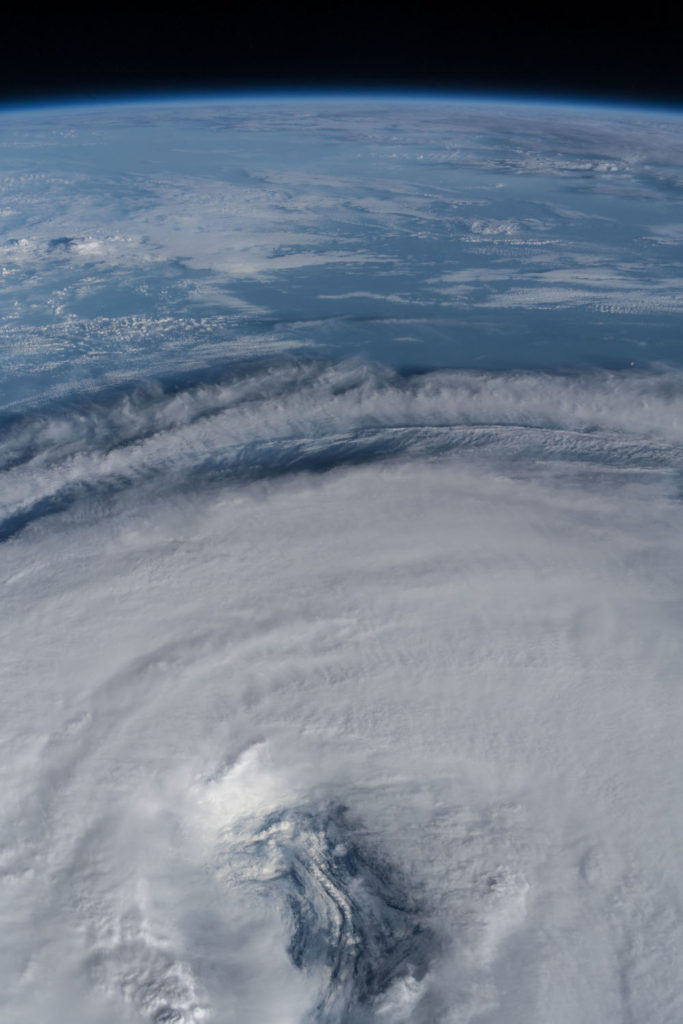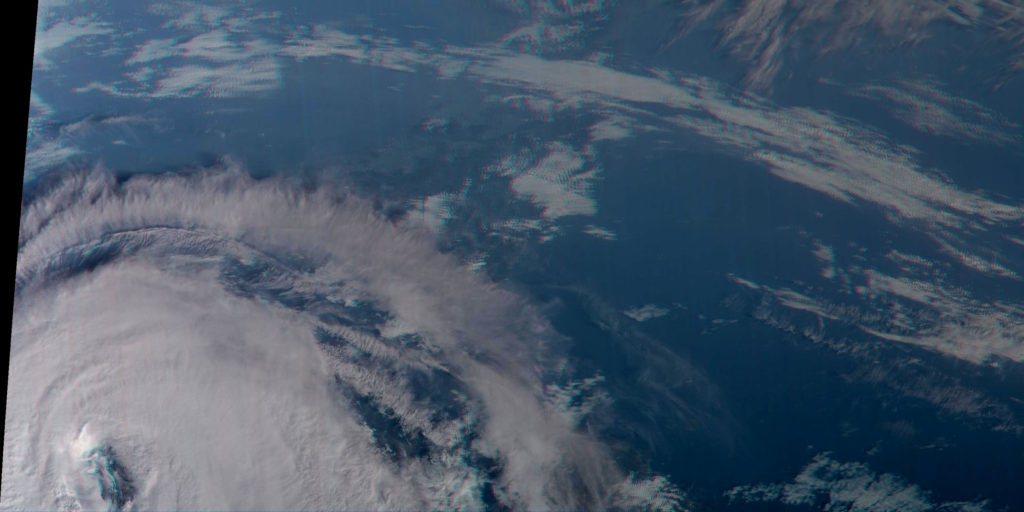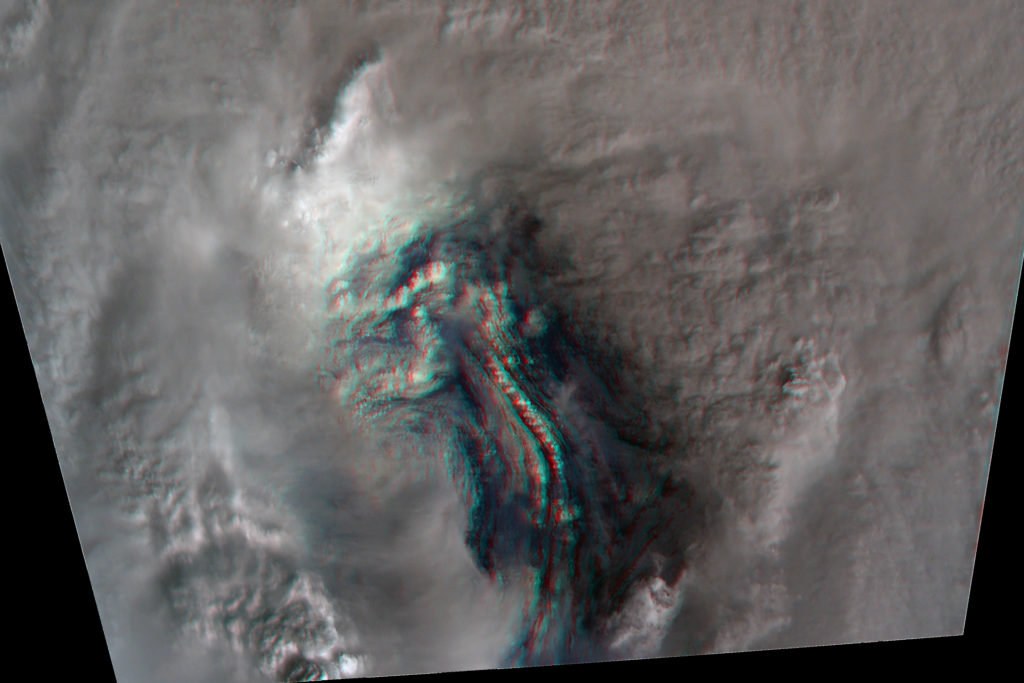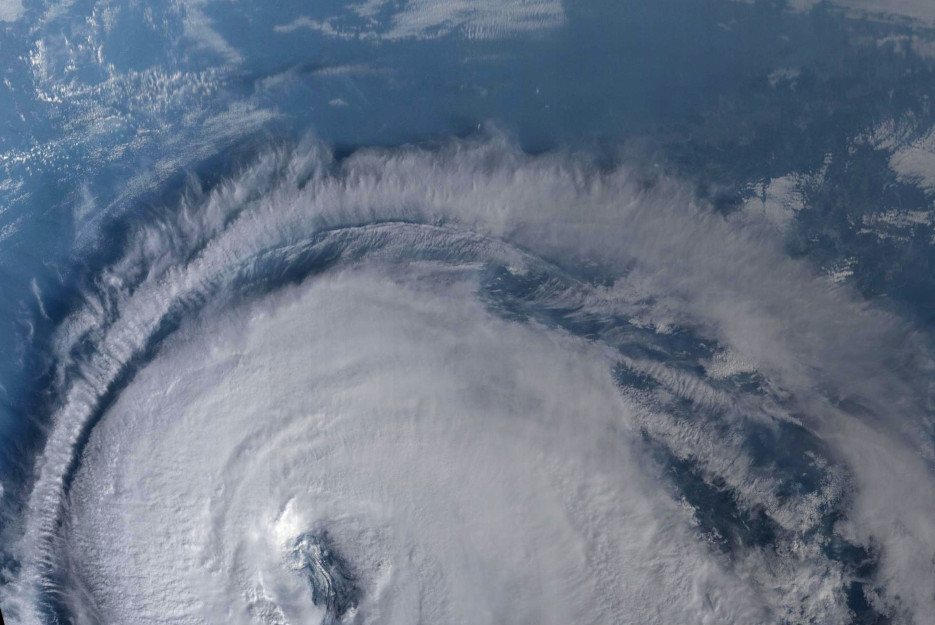One of the precursor projects for Tropical Weather Analytics’ Hurricane Hunter Satellites was the CyMISS (Tropical Cyclone intensity Measurements from the ISS) project which ran from 2014 to 2019. Funded by a series of grants from CASIS (Center for the Advancement of Science in Space) which manages the ISS US National Laboratory for NASA, CyMISS was performed by the science team at Visidyne (the corporate antecedent of Tropical Weather Analytics) for NASA’s Tropical Cyclone Experiment as part of NASA’s CEO (Crew Earth Observations) activities on the International Space Station. The goal of CyMISS was to acquire image sequences of intense tropical cyclones (TCs), such as hurricanes and typhoons, from the ISS using a specially designed photography protocol (see “The Cyclone Intensity Measurements from the ISS (CyMISS)”) to support the development of stereographic imaging techniques of these destructive storms. These techniques will allow the altitudes of the cloud tops near the eye of TCs to be precisely determined so that these TCs can be more accurately characterized compared to existing remote sensing methods (see “Using the Carnot Engine Model to Characterize Hurricanes from Orbit”). Because of how these stereo images are acquired, processed, and analyzed, the motion of cloud features can also be tracked to derive the winds in three dimensions including unique measurements of vertical winds – a vital input for accurately modelling the future track and intensity of TCs (see “The Impact of New Satellite Wind Measurements on Hurricane & Tropical Cyclone Forecasting”)
During the course of this five-year project, the CyMISS project science team (which is now the core of the TWA science team) amassed a large collection of storm images that we wish to share. One of the TCs observed in support of CyMISS by the crew of ISS Expedition 56 was Typhoon Soulik on August 21, 2018 when it was southwest of Japan.

A total of 240 photographs, like the example shown above, were acquired of Typhoon Soulik by the crew of ISS Expedition 56 on August 21, 2018 during a four-minute observation session which started at 22:20:16 GMT (see “ISS Daily Summary Report – 08/21/18”). At this time, the eye of Soulik was located at about 30.2° N, 128.0° E in the East China Sea about 240 kilometers southwest of the Japanese island of Kyushu. Soulik was near its peak intensity and was rated as a strong Category 2 storm, on the Saffir-Simpson scale, with sustained winds of about 177 kph (110 mph). Typhoon Soulik would continue to weaken due to cooler sea surface temperatures as it passed over Japan’s Ryukyu Islands the next day then turned to make landfall in South Korea at about 14:00 GMT on August 23. Soulik was the most powerful storm to strike the Korean Peninsula since 2012.
A synoptic 3D view created from the ISS photographs taken that day is shown below. In order to create the anaglyphic 3D image (left eye red, right eye blue), the individual photographs from the original image sequence were remapped to approximate an overhead view before various parts of the frames were stitched together into a synoptic 3D mosaic covering an area of approximately 1,500 by 750 kilometers.
![]()

The close-up 3D image shown below was created using a pair of photographs of the large, 100 by 60-kilometer eye of Typhoon Soulik taken five seconds apart around 22:20:48 GMT. These images were remapped to approximate an overhead view before being combined to create this anaglyphic 3D image. The resulting stereo view, which can be seen at full size with a scale of 100 meters/pixel by clicking on the image below, covers an area of 225 by 150 kilometers. With a slant range of about 540 kilometers from the ISS, this is one of the highest resolution 3D images of a TC acquired during the CyMISS project and reveals a rich variety of structure in the complex eye of Soulik.
![]()

Related Reading
Andrew LePage, “The Hurricane Hunter Satellites”, Drew Ex Machina, May 15, 2022 [Post]
Drew LePage, “Using the Carnot Engine Model to Characterize Hurricanes from Orbit”, TWA Blog, July 23, 2022 [Post]
Drew LePage, “The Impact of New Satellite Wind Measurements on Hurricane & Tropical Cyclone Forecasting”, TWA Blog, January 15, 2023 [Post]
Paul Joss, “The Cyclone Intensity Measurements from the ISS (CyMISS)”, Space Station Research Explorer [Page]



